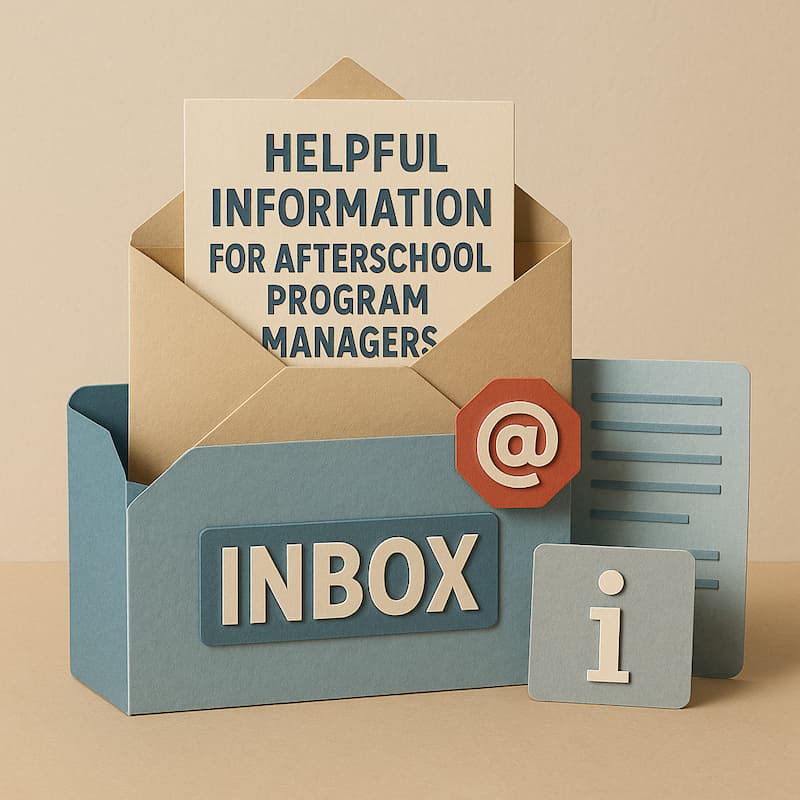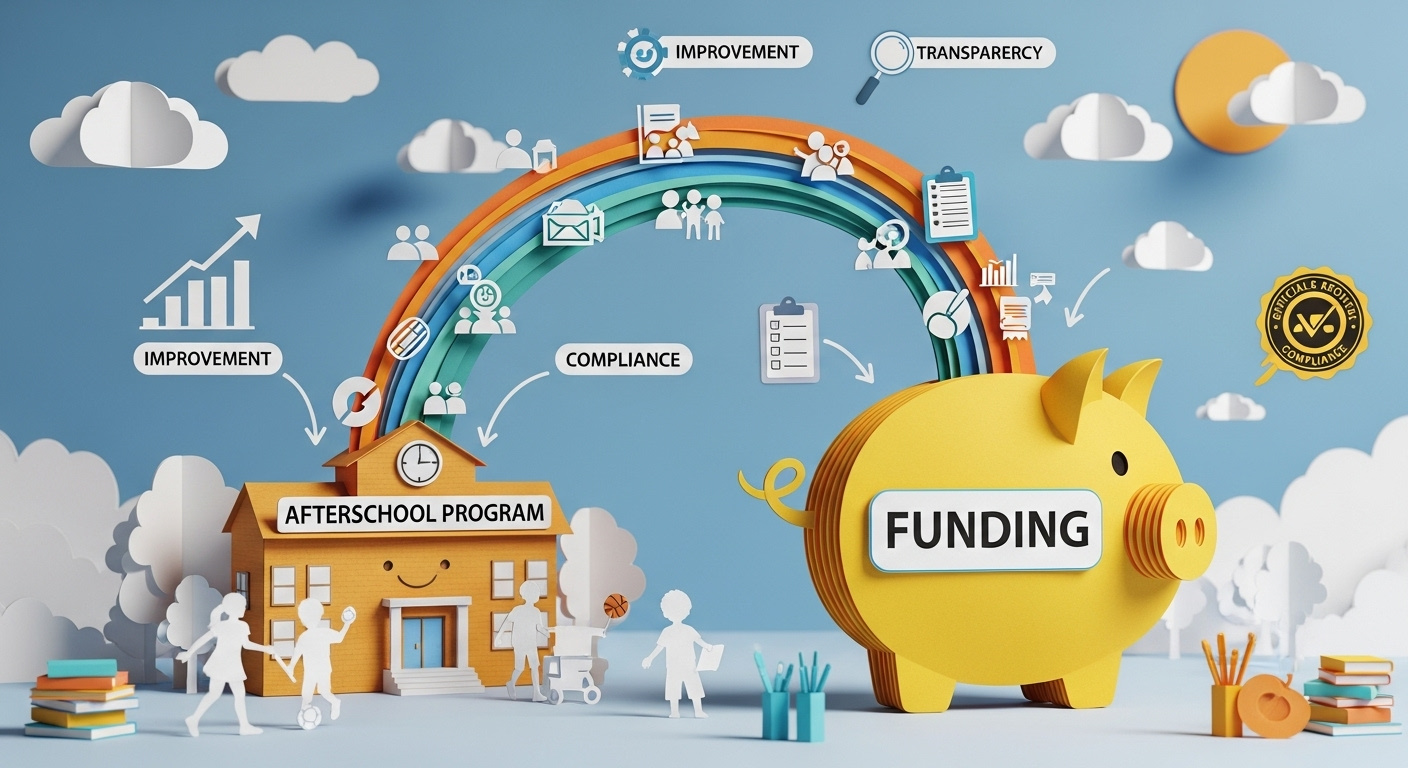
Why Dismantling the U.S. Department of Education Could Strengthen California's Afterschool Programs
Note: Dismantling the U.S. Department of Education could redirect billions in tax dollars back to California, cutting federal bureaucracy and empowering local districts to boost per-pupil funding and tailor education to the state’s diverse needs. It’s a potential win for efficiency and autonomy, assuming the state manages the transition without widening inequities. Note: California sends more money to the federal government than it receives in return, a fact that has led to it being labeled a "donor state".
I've been anticipating this so here's my thinking based on the research we've done.
Introduction
President Trump's March 20, 2025 Executive Order to facilitate the closure of the Department of Education represents a unique opportunity for California's robust afterschool education ecosystem. As the Executive Order states, "the experiment of controlling American education through Federal programs and dollars — and the unaccountable bureaucracy those programs and dollars support — has plainly failed our children, our teachers, and our families."
For California's afterschool programs specifically, this transition from federal to state control could yield significant benefits. With the nation's most extensive afterschool infrastructure already in place and a track record of successful state-led initiatives, California is exceptionally well-positioned to thrive under a more localized approach to expanded learning opportunities.
California's Strong Foundation in Afterschool Education
California already operates the nation's largest and most comprehensive afterschool system. The state ranks number one nationally in afterschool participation, with a robust infrastructure built on state-funded initiatives that predated and now dwarf federal involvement:
- The After School Education and Safety (ASES) Program , established through Proposition 49, provides the backbone of California's afterschool framework
- The newer Expanded Learning Opportunities Program (ELO-P) represents a massive $4 billion state investment in afterschool and summer learning
- California has developed its own 12 Quality Standards for Expanded Learning that guide program implementation regardless of funding source
This established system means California won't be starting from scratch—it already has the administrative capacity, quality standards, and funding mechanisms to fully control its afterschool education landscape.
Benefits of Eliminating Duplicative Federal Oversight
Equivalent Outcomes, Less Administrative Burden
A key finding from afterschool research demonstrates that California's state-funded and federally funded programs achieve comparable results. According to comprehensive evaluations, both state-funded (ASES) and federally funded (21st Century Community Learning Centers) programs adhere to the same quality standards and produce similar student outcomes:
- Both program types have been shown to improve school-day attendance and behavior
- Students in both state and federally funded programs demonstrate improved homework completion rates and academic engagement
- Research indicates that social-emotional outcomes like improved confidence, teamwork, and leadership develop similarly regardless of funding source
As the research states, "outcomes are essentially equivalent" and "any differences tend to stem from local implementation quality rather than the origin of funds." This equivalence suggests California can maintain program quality while eliminating the administrative duplication that comes with federal oversight.
Reducing Compliance Costs
California afterschool programs currently navigate dual reporting systems, with federally funded sites completing extensive 21st CCLC requirements that include:
- Annual Performance Reports (APRs) detailing student outcomes
- Federal compliance monitoring visits
- Grant objective reporting and fiscal accountability documentation
These federal requirements create significant administrative burden without adding measurable value to program quality or outcomes. By transitioning to a fully state-controlled system, California could redirect substantial resources currently spent on federal compliance toward actual program improvement and expansion.
Opportunities for Enhanced Quality and Innovation
Strengthening California's Quality Measurement System
Without federal constraints, California could expand its already robust quality assessment framework to better capture the full impact of afterschool programs:
- Incorporate more comprehensive social-emotional learning (SEL) outcomes that federal reporting doesn't specifically require
- Leverage California's emerging longitudinal data system to track long-term participant outcomes
- Implement more nuanced program evaluation that incorporates qualitative site observations, youth surveys, and parent feedback
As the research notes, "Without federal reporting narrowly focused on academic achievement, California can enhance its quality measurement system to include academic, behavioral, and social-emotional metrics that give a fuller picture of program effectiveness."
Aligning Afterschool with California's Educational Priorities
Greater state autonomy would allow California to align afterschool programming more tightly with its broader educational goals:
- Strengthen connections between school-day curriculum and afterschool activities
- Tailor programs to address California's unique demographic needs, particularly for the state's 1.1 million English learners
- Develop specialized programming that supports the state's workforce development priorities
- Focus on integrating afterschool experiences with the regular school day, rather than treating them as separate federal programs
Financial Advantages of State Control
Streamlined Funding Model
Currently, California's afterschool funding comes through multiple channels that sometimes create inefficiencies:
- State ASES grants (providing the majority of afterschool funding)
- Federal 21st CCLC grants
- The newer state ELO-P funding
- Various local and private funding sources
By consolidating oversight under the state umbrella, California could implement a more coherent funding strategy that eliminates gaps and overlaps. This would allow for more strategic allocation of resources based on local needs rather than federal grant formulas.
Administrative Cost Savings
Administrative savings from eliminating federal afterschool compliance requirements could be redirected to serve more students. These savings would come from:
- Reduced staff time spent on federal grant applications and reporting
- Elimination of duplicate administrative positions that currently manage separate state and federal requirements
- Streamlined monitoring and technical assistance under a unified state system
Implementation Roadmap
For policy makers we spent time thinking about what we would recommend. Transitioning afterschool programs from federal to state control could be accomplished through a practical, phased approach:
Phase 1: Funding Integration (Year 0-1)
- California Legislature establishes mechanisms to receive and distribute any block grants replacing 21st CCLC funds
- Integration of federal program sites into the state's ASES and ELO-P frameworks
- Maintenance of services to all currently served students
Phase 2: Administrative Streamlining (Year 1-2)
- Consolidation of monitoring and reporting under California's Expanded Learning Division
- Reallocation of staff currently focused on federal compliance to program quality support
- Development of unified data reporting system
Phase 3: Quality Enhancement (Year 2+)
- Implementation of enhanced quality standards and assessment tools
- Expansion of professional development aligned with California's specific needs
- Development of more comprehensive outcome measurement system
Conclusion
The Executive Order to dismantle the Department of Education presents California with an opportunity to strengthen its already robust afterschool education system. The evidence is clear: California's state-led afterschool initiatives achieve outcomes equal to or better than federally controlled programs, with the potential for greater innovation, reduced administrative burden, and more efficient use of resources under full state control.
California's extensive experience in operating high-quality afterschool programs—through ASES, ELO-P, and other state initiatives—means it has the infrastructure, expertise, and commitment to excel without federal oversight. By eliminating the bureaucratic inefficiencies of dual state-federal administration, California can direct more resources toward what matters most: providing high-quality expanded learning opportunities that support the academic success and well-rounded development of all students.
The future of California's afterschool education is bright, and full state control will allow these essential programs to reach their maximum potential in supporting student success.
** References:**
California Afterschool Network. (2018). State of California Expanded Learning.
Government Accountability Office. (2017). Education Needs to Improve Oversight of Its 21st Century Program.
Legislative Analyst's Office. (2023). The 2025-26 Budget: Expanded Learning Opportunities Program.
UCLA. (2007). The Long-Term Effects of After-School Programming on Educational Adjustment and Juvenile Crime: A Study of the LA's BEST After-School Program.






